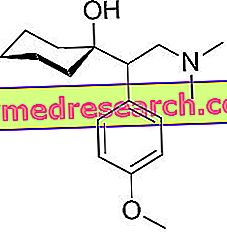Generality
Beta 2 microglobulin ( B2M ) is a protein whose plasmatic and / or urinary dosage provides useful information on renal function .

The determination of the concentration of this parameter is important above all in the distinction of a tubular from glomerular nephropathy.
The level of serum beta 2 microglobulin also increases in all conditions of increased cell turnover, such as inflammation, autoimmune disorders and infectious diseases. In these contexts, value is not diagnostic for specific pathologies, but can direct the doctor to discriminate or investigate with other tests the causes that he suspects to be at the basis of alteration or symptomatology.
Beta 2 microglobulin is also used as a tumor marker, meaning that the increase in its plasma concentrations may be related to the presence of a neoplastic process.
Note. Beta 2 microglobulin is found predominantly in plasma, but is present in low amounts even in the cerebrospinal fluid and urine.
What's this
Beta 2 microglobulin is a protein that belongs to the class of betaglobulins . Normally, this is present in high concentration on the surface of the cells of the immune system, as a constant subunit of class I histocompatibility antigens (note: more generally, the B2M protein is found - in varying quantities - on the surface of all nucleated cells ). Beta 2 microglobulin is also found in blood and other biological fluids (urine and cerebrospinal fluid) as an expression of cell turnover (turnover) .
B2M is filtered by the renal glomerulus and reabsorbed at the level of the tubules. For this reason, its determination in the laboratory is important to establish the health status of the kidneys .
Why do you measure
The dosage of beta 2 microglobulin is performed to assess kidney function and as a support in the diagnosis of any damage to the organs themselves.
At the level of the kidneys, beta 2 microglobulin passes through the glomeruli (blood filtering units) and is reabsorbed by the proximal tubules . Under normal conditions, only a small part of B2M is present in the urine.
When the glomeruli and / or the renal tubules are damaged or affected by pathologies, however, beta 2 microglobulin concentrations increase, due to the decreased ability to reabsorb proteins. As a result, the values of B2M in the blood and in other biological liquids increase.
Examination of beta 2 microglobulin can be used when it is necessary to distinguish between glomerular or tubular damage . The dosage of this parameter is also prescribed to monitor the course of diseases affecting the kidneys, previously diagnosed.
Sometimes, the beta 2 microglobulin examination is indicated to monitor people exposed to occupational cadmium or other heavy metals .
To know
Activation of the immune system increases the release of beta 2 microglobulins by T and B lymphocytes. Protein concentrations also increase following diseases that imply hyperactive cell turnover . However, in such situations, beta 2 microglobulin is not specific for any particular pathology.
When is the exam prescribed?
Your doctor may indicate that you are taking a beta 2 microglobulin test on blood and / or urine when the patient shows signs and symptoms of renal dysfunction, such as:
- Swelling (edema), particularly around the eyes or on the face, wrists or ankles;
- Foamy urine or with blood traces;
- Protein in urine;
- Fatigue;
- Nausea.
Examination of beta 2 microglobulin can be prescribed when the doctor wants to distinguish between tubular and glomerular nephropathies :
- The increase of the parameter in the urine is important in the diagnosis of diseases of the renal tubules .
- The dosage of beta 2 microglobulin in the blood is useful, instead, as an index of glomerular filtration .
Evaluation of beta 2 microglobulin may also be recommended periodically to determine early renal dysfunction, when a patient has been exposed to high concentrations of cadmium and / or other heavy metals, such as mercury, for occupational reasons .
Related Exams
The dosage of beta 2 microglobulin can be prescribed both on blood and on urine, in association with the evaluation of other parameters indicative of renal function, such as:
- Azotemia;
- Creatinine;
- Microalbuminuria.
Furthermore, the doctor can indicate the simultaneous execution of the following analyzes:
- Complete blood count;
- ESR (erythrocyte sedimentation rate);
- PCR (C-reactive protein);
- Ferritin;
- LDH (lactate dehydrogenase).
The combination of these tests is useful for establishing the presence of damage, determining the extent of organ dysfunction and distinguishing glomerular pathologies from those of the renal tubules.
Other indications
- Amyloidosis related to dialysis : in patients with long-standing dialysis, high concentrations of beta 2 microglobulin can accumulate in various tissues and joint spaces; the examination of this parameter can be used, therefore, to monitor this condition, in association with the biopsy of the tissue involved.
- Kidney transplantation : in some cases, the urine B2M test may be prescribed to highlight early signs of rejection.
- Renal failure : the determination of the beta 2 microglobulin concentration gives more information on the subject's prognosis.
- Hematologic tumors : the beta 2 microglobulin dosage is used as a tumor marker for some neoplastic processes that affect blood cells (multiple myeloma and lymphoma). This parameter is not diagnostic for specific pathologies, but is associated with tumor extension and can provide the clinician with additional information on disease progression and treatment efficacy. It should also be noted that the beta 2 microglobulin dosage as a tumor marker is not considered useful in a general population screening.
Normal values
The normal values of beta 2 microglobulin in the blood are less than 0.2 mg / dL, while in the urine they are between 0 and 300 µg / L.
Note : the reference interval of the exam can change according to age, sex and instrumentation used in the analysis laboratory. For this reason, it is preferable to consult the ranges listed directly on the report. It should also be remembered that the results of the analyzes must be assessed as a whole by the general practitioner who knows the patient's medical history.
Beta 2 High Microglobulin - Causes
An increase in beta 2-microglobulin values can be observed in case of:
- Kidney failure;
- Congenital tubulopathies;
- Acquired tubulopathies (cisplatin poisoning, hypokalemia nephropathy, pyelonephritis, etc.);
- Wilson's disease (a hereditary metabolic defect characterized by a systemic accumulation of copper in various tissues of the body, including the liver and central nervous system).

High concentrations of beta 2 microglobulin may indicate the presence of other conditions:
- Amyloidosis related to dialysis;
- Organ rejection in renal transplant patients;
- Cadmium intoxication.
An increase in blood and urine beta 2 microglobulin has been observed in certain types of hematological cancers, including:
- Multiple myeloma;
- Leukemia;
- Lymphoma.
The increase of beta 2 microglobulin can also be found in other pathologies associated with an increase in the rate of production or cellular destruction and in the conditions characterized by the involvement of the immune system, as in the case of autoimmune diseases (eg lupus erythematosus, rheumatoid arthritis etc. .) or chronic inflammatory diseases (eg Crohn's disease).
Therefore, an increase in beta 2 microglobulin concentrations can also be detected under the following conditions:
- Infectious diseases (eg cytomegalovirus or HIV infections);
- Hepatitis;
- Sarcoidosis;
- collagen;
- Cerebrovascular disorders (eg vasculitis);
- Tumors of the central nervous system (eg secondary lymphoma metastases);
- Multiple sclerosis (demyelinating neurodegenerative disease).
Also certain drugs that can increase blood concentrations and urine in beta 2 microglobulin; these include:
- Lithium;
- Aminoglycoside antibiotics, cyclosporine and gentamicin;
- Cisplatin and carboplatin;
- Intereferone-α;
- X-ray contrast media.
Beta 2 Low Microglobulin - Causes
Low concentrations of beta 2 microglobulin in the blood or urine are not usually associated with medical problems and / or pathological consequences, therefore they are not considered clinically relevant.
How to measure it
The beta 2 microglobulin examination is performed on a venous blood sample taken from the arm. Sometimes the parameter can be measured on urine collected at a certain time of the day (random) or during the 24 hours.
Preparation for the exam
Examination of beta 2 microglobulin does not require special preparation. However, before drawing blood, it is advisable to observe a fast of at least 8 hours, during which a small quantity of water is allowed.
Some drugs can affect the test result; before the examination, therefore, any therapies should be reported to the doctor.
Interpretation of Results
The finding of high concentrations of beta 2 microglobulin in the blood and urine may indicate the presence of numerous problems. This outcome is not related, however, to specific pathologies: the increase in the parameter can signal the presence of both renal damage and conditions that activate the immune system (eg serious infections, inflammation and autoimmune diseases).
For this reason, the dosage of beta 2 microglobulin is a test used mainly as a support to the diagnosis of damage or renal dysfunction, which must be interpreted by the doctor in the set of clinical picture and reports of other investigations.
Regarding kidney diseases:
- An increase in beta 2 microglobulin values in the blood and low concentrations in the urine indicate that the disease is associated with glomerulus dysfunction;
- If the B2M is low in the blood, but is high in the urine, then it is likely that the person has congenital or acquired renal tubule damage or pathology (cadmium poisoning, cisplatin, hypokalemia nephropathy, pyelonephritis, etc.).
An increase in blood and urine of beta 2 microglobulin has been observed in certain types of cancer, including multiple myeloma, leukemia and lymphoma.



